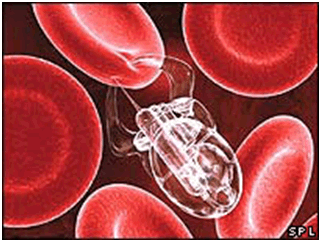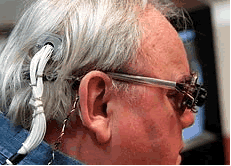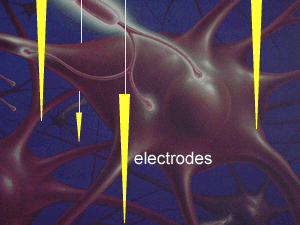What role will machines play in shaping our future?
Nano-machines



A blind person wearing a retinal implant.
Research
into mind control of artificial limbs took a huge leap forward when in
November 2000 researchers at the Duke University wired the brain of an
owl monkey to a mechanical arm. The monkey's thoughts controlled the remote
arm through the internet as it was placed some 900 km away.
To achieve
this researchers implanted electrodes into multiple regions in a particular
part of the brain responsible for movement. The electrodes recorded the
pattern with which groups of neurons became activated when certain movements
were performed, such as extending the hands to reach for food. These patterns
were fed into a computer and mathematical models created to predict the
animal's hand movements in 3D space and real time. The test animals were
able to control the robotic arm in three dimensions to reach for a piece
of food.
In other words the computer, with the aid of the brain implant, could
decipher the pattern of electrical impulses and recognise what movement
the brain wanted the hand to perform. Signals were then sent by the computer
to the hand to perform such movements.

This breakthrough has implications for the treatment of paraplegic patients and others with spinal cord damage. It is hoped that, one day, development of prosthetic limbs that are as easy to use as the real limb will be a reality.
But the implications of such research are far reaching. Mind control and the ability to read once thoughts are only a step away as nanotechnology gives us the ability to create smaller and more powerful implants that can interact directly with the nerve cells in the brain.
Why was it necessary for the researchers to first obtain the pattern of nerve impulses from the brain of the monkey?
How did the researchers use the many patterns of nerve impulses they observed?
Intuitive control of robots in remote battle field operating theatres by trained surgeons who are a safe distance away is one possible use for this new technology.Can you see any other uses for thought control of robots? Mention the advantages of such control.